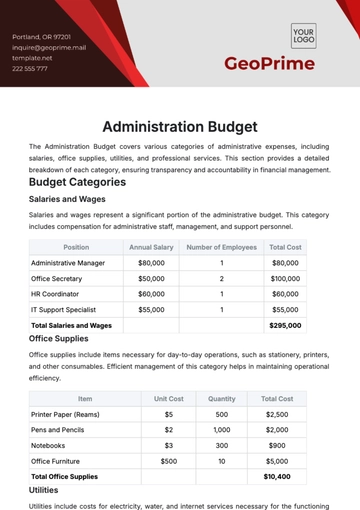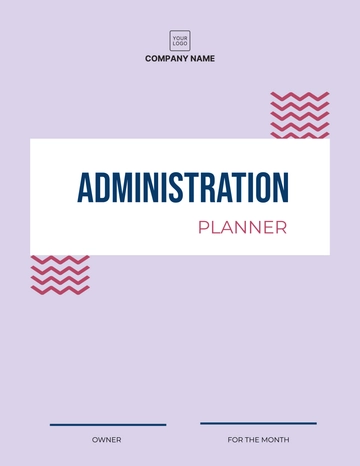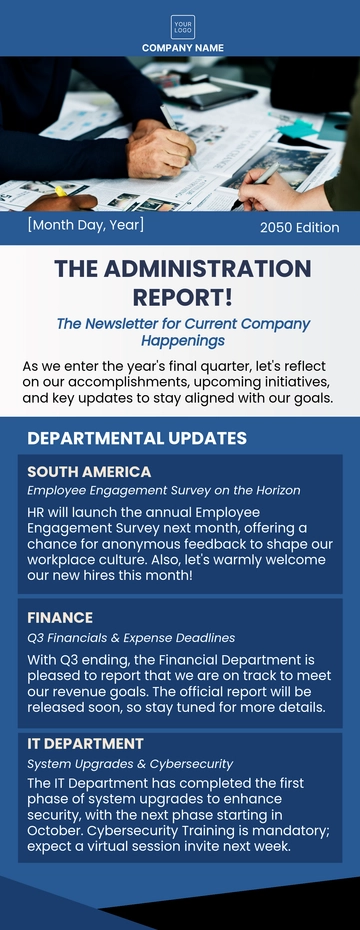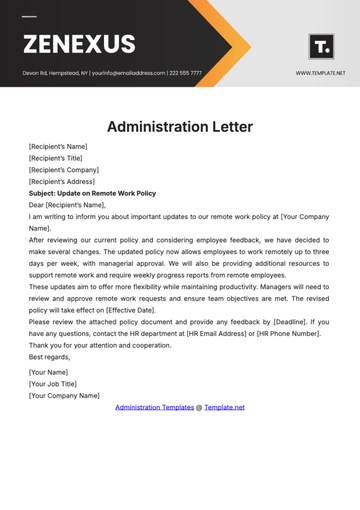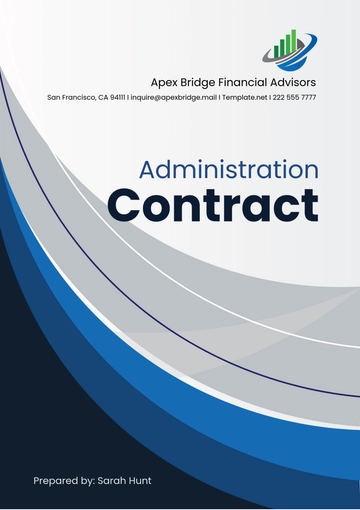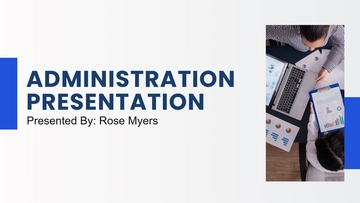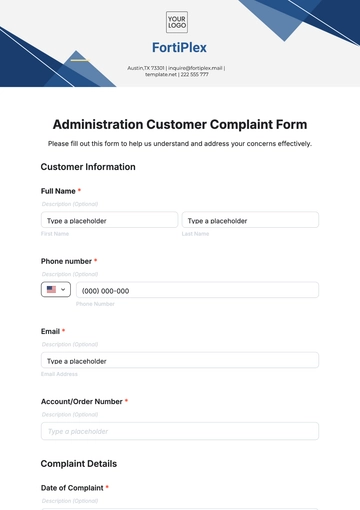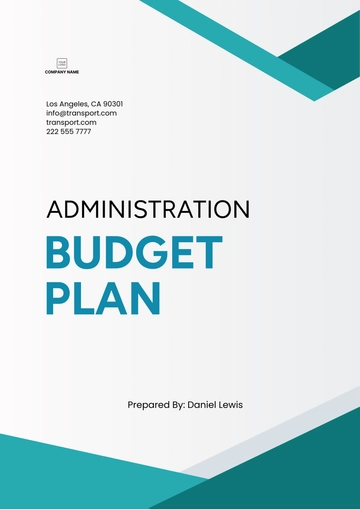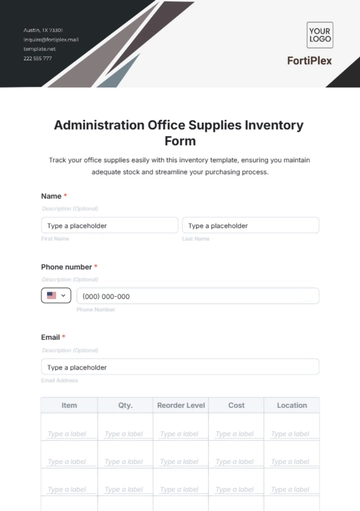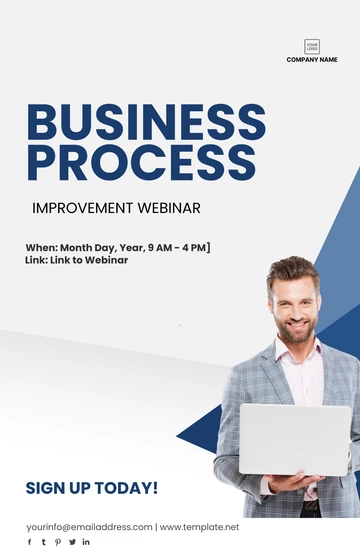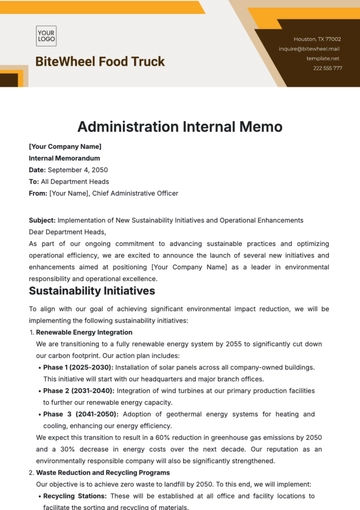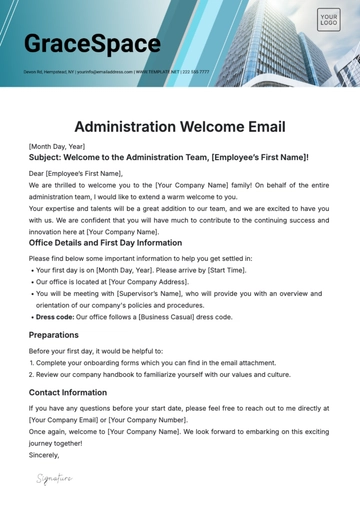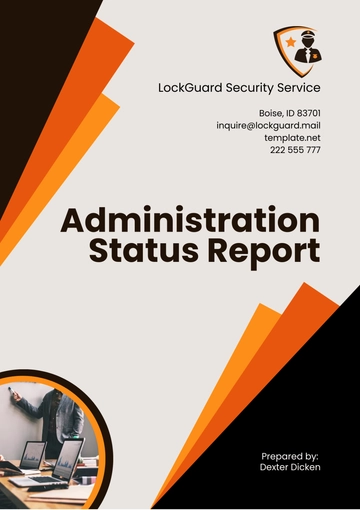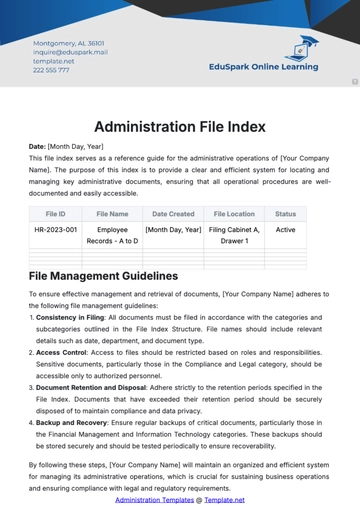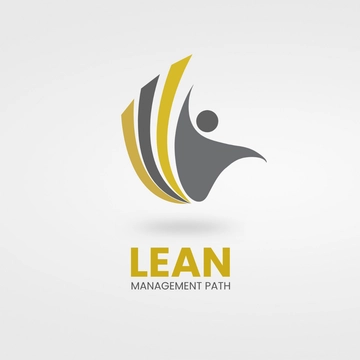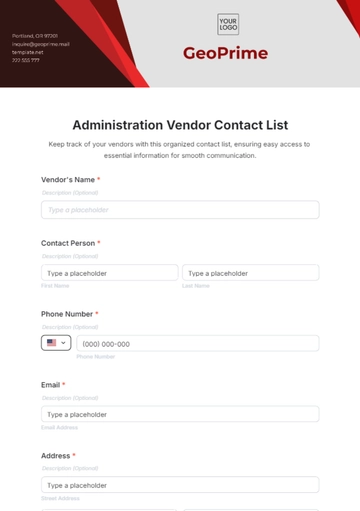Free Administration Financial Planning Guide
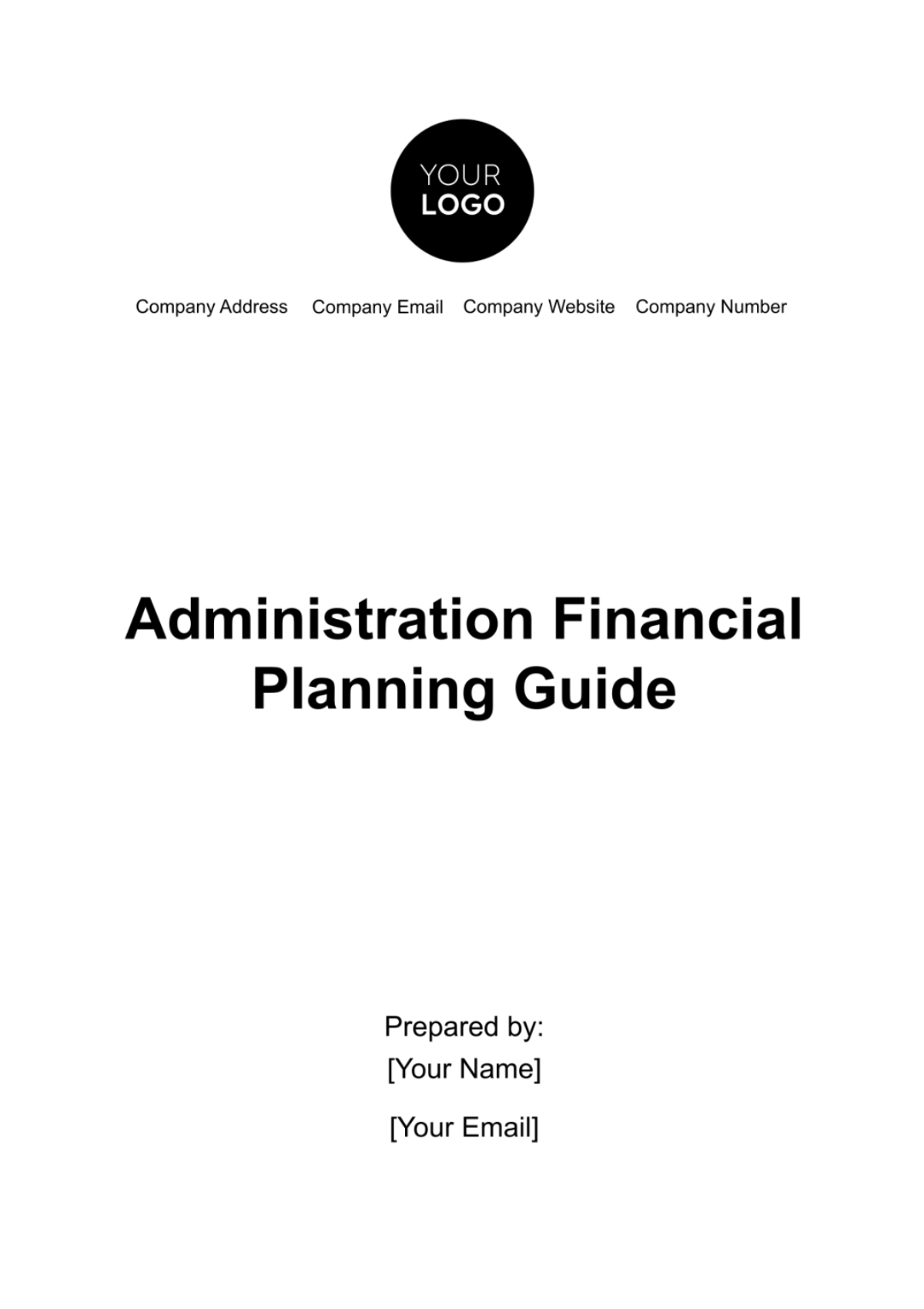
Welcome to the Comprehensive Administration Financial Planning Guide! In this guide, we'll delve into the intricacies of financial management within administration, offering insights and strategies for effective planning and execution.
I. Understanding Financial Management
Financial management encompasses various activities such as budgeting, accounting, reporting, and forecasting. It ensures fiscal responsibility and accountability within an organization, laying the foundation for sound decision-making and sustainable growth.
II. Setting Financial Goals
Setting clear and achievable financial goals is crucial for guiding the direction of your organization's financial management efforts. Here's a more detailed breakdown of how to effectively set financial goals:
Identifying Objectives:
Begin by identifying both short-term and long-term objectives for your organization. Short-term goals may include increasing revenue, reducing expenses, or improving cash flow within the next six to twelve months. Long-term goals might involve expanding operations, investing in new technology, or achieving certain levels of profitability over the next three to five years.
SMART Criteria for Goal Setting:
Use the SMART criteria to ensure that your financial goals are Specific, Measurable, Achievable, Relevant, and Time-bound. This framework helps in creating goals that are well-defined and actionable. For example, instead of setting a vague goal like "increase revenue," a SMART goal would be "increase monthly revenue by 10% within the next fiscal year."
Aligning Goals with Organizational Mission and Vision:
Ensure that your financial goals align with the overall mission and vision of your organization. Your financial objectives should support and contribute to the broader strategic objectives of the organization. For instance, if your organization's mission is to provide affordable healthcare services, your financial goals might include initiatives to reduce costs for patients while maintaining quality care.
III. Budgeting Basics
Budgeting is the process of creating a financial plan for allocating resources to achieve organizational goals. Here's a more detailed look at the basics of budgeting:
Definition of Budgeting:
Budgeting involves estimating future income and expenses and allocating resources accordingly. It provides a roadmap for financial decision-making and helps in controlling spending and maximizing resources.
Types of Budgets:
Types of Budgets | Description |
|---|---|
Operating Budget | Focuses on day-to-day expenses and revenue generation, covering operational activities |
Capital Budget | Involves long-term investments in assets such as equipment, facilities, infrastructure. |
Cash Flow Budget | Tracks the flow of cash in and out of the organization to ensure sufficient liquidity. |
Steps in the Budgeting Process:
The budgeting process typically involves several steps, including preparation, approval, implementation, monitoring, and evaluation. During the preparation phase, gather relevant financial data and input from key stakeholders. Once the budget is drafted, it goes through an approval process before being implemented. Regular monitoring and evaluation ensure that the budget remains on track and can be adjusted as needed to reflect changes in the organization's financial situation or external factors.
IV. Developing a Budget
Developing a budget is a multifaceted process that involves thorough analysis, strategic planning, and meticulous allocation of resources. Here's a deeper dive into each aspect of budget development:
Comprehensive Data Gathering: Begin by gathering comprehensive financial data from various sources within the organization. This includes historical financial records, current income streams, detailed expense breakdowns, asset inventories, and liabilities. A thorough understanding of the organization's financial landscape forms the basis for accurate budgeting.
Stakeholder Consultation: Engage relevant stakeholders, including department heads, finance teams, and key decision-makers, in the budgeting process. Solicit input and insights from individuals with firsthand knowledge of departmental needs and operational requirements. Collaborative budgeting ensures alignment with organizational goals and fosters a sense of ownership among stakeholders.
Strategic Resource Allocation: With a clear understanding of financial data and stakeholder input, allocate resources strategically to support organizational objectives. Prioritize budget allocations based on critical needs, revenue-generating opportunities, and areas of strategic importance. Balance short-term needs with long-term sustainability, ensuring adequate funding for both immediate operational expenses and future growth initiatives.
Contingency Planning: Anticipate potential risks and uncertainties by incorporating contingency plans into the budgeting process. Allocate reserves or contingency funds to address unforeseen expenses or revenue shortfalls, providing a buffer against financial volatility. By proactively planning for contingencies, organizations can mitigate the impact of unexpected events on financial stability.
Performance Metrics and Accountability: Establish clear performance metrics and accountability measures to track budget implementation and outcomes effectively. Define key performance indicators (KPIs) related to financial targets, operational efficiency, and strategic objectives. Regularly monitor budget performance against established metrics, identifying variances and taking corrective action as needed to ensure alignment with organizational goals.
Iterative Review and Refinement: Budget development is an iterative process that requires ongoing review and refinement. Continuously evaluate budget assumptions, revenue projections, and expenditure patterns to adapt to changing internal and external factors. Solicit feedback from stakeholders and incorporate lessons learned from past budget cycles to improve future planning processes.
Communication and Transparency: Foster open communication and transparency throughout the budget development process. Keep stakeholders informed of budget decisions, rationale, and expected outcomes to build trust and accountability. Provide opportunities for feedback and dialogue to ensure that budget priorities reflect organizational values and priorities.
By following these steps, organizations can develop a comprehensive budget that aligns resources with strategic priorities, promotes financial sustainability, and supports long-term success.
V. Financial Forecasting
Financial forecasting is a critical aspect of financial planning that involves predicting future financial performance based on historical data, market trends, and strategic assumptions. Here's a closer look at the components and techniques involved in financial forecasting:
Data Analysis and Trend Identification: Start by analyzing historical financial data to identify trends, patterns, and relationships that may influence future performance. Consider factors such as revenue growth rates, expense trends, market fluctuations, and seasonality effects. Use statistical methods and data visualization techniques to uncover insights and inform forecasting assumptions.
Market and Economic Analysis: Conduct a thorough analysis of external factors that may impact financial performance, such as market conditions, industry trends, regulatory changes, and economic indicators. Monitor macroeconomic variables such as GDP growth, inflation rates, interest rates, and consumer spending patterns to anticipate broader market dynamics and their implications for the organization.
Scenario Planning: Develop multiple scenarios or "what-if" analyses to account for various possible outcomes and their associated probabilities. Consider best-case, worst-case, and most likely scenarios based on different assumptions and external factors. Scenario planning helps organizations prepare for uncertainty and adapt their strategies accordingly, improving resilience and agility in a dynamic environment.
Forecasting Methods and Models: Utilize a variety of forecasting methods and models to predict future financial performance accurately. Common techniques include time series analysis, regression analysis, exponential smoothing, and Monte Carlo simulation. Select the most appropriate method based on data availability, forecasting horizon, and complexity of the underlying relationships.
Assumptions and Sensitivity Analysis: Clearly document and validate key assumptions underlying the financial forecasts, such as revenue growth rates, cost projections, and market assumptions. Conduct sensitivity analysis to assess the impact of changes in key assumptions on the forecasted outcomes. Identify and prioritize the most critical assumptions to focus risk management efforts and enhance forecast accuracy.
Collaborative Forecasting Process: Involve relevant stakeholders, including finance teams, operational managers, and subject matter experts, in the forecasting process. Solicit input and insights from individuals with domain expertise and firsthand knowledge of market dynamics and operational realities. Collaborative forecasting enhances the accuracy and reliability of forecasts by incorporating diverse perspectives and expertise.
Continuous Monitoring and Adjustment: Monitor actual financial performance against forecasted values regularly, identifying variances and adjusting forecasts as needed based on emerging trends and new information. Establish clear trigger points and decision criteria for adjusting forecasts in response to significant deviations from initial projections. Embrace a culture of continuous improvement and learning, iterating on forecasting processes to enhance accuracy and relevance over time.
VI. Cash Flow Management
Cash flow management is vital for the financial health of any organization. It involves overseeing the movement of cash in and out of the business to ensure that there is enough liquidity to cover expenses and obligations when they come due. Here's a more detailed look at the components and strategies involved:
Understanding Cash Flow Dynamics:
Cash flow refers to the movement of money into and out of a business over a specific period.
Positive cash flow occurs when the inflows of cash exceed the outflows, indicating that the business is generating more cash than it's spending.
Negative cash flow occurs when the outflows exceed the inflows, potentially leading to liquidity issues and financial strain.
Components of Cash Flow:
Cash inflows include revenue from sales, investments, loans, and other sources.
Cash outflows consist of expenses such as salaries, rent, utilities, taxes, loan repayments, and purchases of inventory or equipment.
Cash Flow Forecasting:
Forecasting cash flow involves predicting future cash inflows and outflows to anticipate periods of surplus or shortfall.
This allows businesses to plan for contingencies, make informed investment decisions, and ensure that there's enough cash on hand to meet obligations.
Strategies for Improving Cash Flow:
Accelerating Receivables: Encourage prompt payment from customers through incentives or discounts. Implement efficient invoicing and collection processes to reduce the accounts receivable turnover time.
Managing Payables: Negotiate favorable payment terms with suppliers to optimize cash flow. Take advantage of discounts for early payment while avoiding late fees and penalties.
Tightening Inventory Management: Minimize excess inventory levels to free up cash and reduce storage costs. Implement just-in-time inventory practices to align supply with demand.
Controlling Expenses: Identify areas where costs can be reduced without compromising quality or productivity. Implement cost-saving measures such as energy efficiency initiatives or renegotiating contracts with vendors.
Exploring Financing Options: Evaluate various financing alternatives such as lines of credit, term loans, or leasing arrangements to address short-term cash flow needs. Choose the option that offers the most favorable terms and aligns with the organization's long-term financial strategy.
Monitoring Cash Flow Performance:
Regularly monitor and analyze cash flow statements to track actual performance against forecasts.
Identify trends, discrepancies, or areas of concern that may require corrective action.
Adjust cash flow projections and strategies as needed to maintain liquidity and financial stability.
By effectively managing cash flow, organizations can mitigate financial risks, seize growth opportunities, and maintain operational resilience even during challenging economic conditions.
VII. Financial Reporting
Financial reporting plays a crucial role in providing stakeholders with transparency and insight into an organization's financial performance, position, and cash flows. Here's an in-depth exploration of the key aspects of financial reporting:
Type of Financial Report | Description |
|---|---|
Income Statement | Provides a summary of revenue, expenses, and net income (or loss) over a specific period. |
Balance Sheet | Presents the company's assets, liabilities, and equity at a specific point in time. |
Cash Flow Statement | Details the sources and uses of cash during a given period. |
Importance of Timely and Accurate Reporting:
Timely financial reporting ensures that stakeholders have access to up-to-date information for decision-making, strategic planning, and compliance purposes.
Accuracy and reliability in financial reporting build trust and credibility with investors, creditors, regulators, and other stakeholders.
Compliance with Regulatory Requirements:
Organizations must adhere to applicable accounting standards (e.g., GAAP, IFRS) and regulatory requirements (e.g., SEC filings) when preparing financial reports.
Compliance ensures transparency, consistency, and comparability in financial reporting across industries and jurisdictions.
Financial Reporting Process:
Data Collection and Recording: Gather financial data from various sources, such as accounting systems, ledgers, and supporting documents.
Preparation of Financial Statements: Compile the collected data into the required financial statement formats, ensuring accuracy and completeness.
Review and Analysis: Verify the accuracy of the financial statements through internal or external review processes. Analyze the results to identify trends, anomalies, or areas requiring further investigation.
Distribution and Disclosure: Share the financial reports with stakeholders through appropriate channels, ensuring transparency and compliance with disclosure requirements.
Role of Financial Reporting in Decision-Making:
Financial reports serve as a basis for evaluating performance, assessing financial health, and making strategic decisions related to investment, financing, and resource allocation.
They provide insights into revenue generation, cost management, profitability, liquidity, and financial risks, enabling informed decision-making at all levels of the organization.
Continuous Improvement and Transparency:
Organizations should continuously evaluate and improve their financial reporting processes to enhance efficiency, accuracy, and relevance.
Transparency in financial reporting fosters trust, accountability, and stakeholder confidence, contributing to long-term sustainability and success.
By prioritizing transparency, accuracy, and compliance in financial reporting, organizations can strengthen stakeholder relationships, mitigate risks, and drive sustainable growth.
VIII. Internal Controls
Internal controls are procedures and policies designed to safeguard assets, ensure accuracy in financial reporting, and prevent fraudulent activities within an organization. Effective internal controls provide assurance to management and stakeholders that operations are conducted in a transparent, compliant, and efficient manner. Here's a detailed look at key aspects of internal controls:
Segregation of Duties (SoD): Divide responsibilities among different individuals or departments to reduce the risk of errors or fraud. For example, the person responsible for approving transactions should be different from the one recording them.
Authorization Procedures: Establish clear guidelines for obtaining approval before executing financial transactions or making significant decisions. This ensures that expenditures are within budget and align with organizational objectives.
Physical Controls: Implement measures to safeguard physical assets, such as restricted access to sensitive areas, security cameras, and inventory tracking systems. These controls minimize the risk of theft or misuse of resources.
Documentation and Record-Keeping: Maintain accurate and complete records of financial transactions, including invoices, receipts, and contracts. Proper documentation facilitates auditing processes and ensures transparency in financial reporting.
Monitoring and Review: Regularly monitor internal controls to assess their effectiveness and identify areas for improvement. Conduct periodic reviews and audits to detect any deviations from established procedures and address them promptly.
Employee Training and Awareness: Provide training to employees on the importance of internal controls and their role in maintaining compliance. Promote a culture of accountability and integrity to reinforce adherence to established procedures.
By implementing robust internal controls, organizations can minimize the risk of financial losses, enhance operational efficiency, and uphold trust and confidence among stakeholders.
IX. Risk Management
Risk management is the process of identifying, assessing, and mitigating risks that may impact an organization's ability to achieve its objectives. By proactively addressing potential threats and opportunities, organizations can minimize negative impacts and capitalize on positive outcomes. Here are the key components of effective risk management:
Risk Identification: Identify potential risks that may arise from internal or external factors, including financial, operational, strategic, and compliance-related risks. Engage stakeholders from across the organization to gather insights and perspectives on potential risks.
Risk Assessment: Evaluate the likelihood and potential impact of identified risks to prioritize them based on their significance. Use qualitative and quantitative methods, such as risk matrices or scenario analysis, to assess risks and determine their severity.
Risk Mitigation Strategies: Develop strategies to mitigate or reduce the impact of identified risks. This may include implementing internal controls, diversifying investments, purchasing insurance, or entering into hedging arrangements to manage financial risks.
Risk Monitoring: Continuously monitor the risk landscape to detect any changes or emerging threats that may affect the organization. Establish key risk indicators (KRIs) to track the effectiveness of risk mitigation measures and trigger proactive responses when necessary.
Risk Communication: Maintain open communication channels to keep stakeholders informed about potential risks and mitigation efforts. Provide regular updates on risk assessment findings, mitigation strategies, and the overall risk management process.
Contingency Planning: Develop contingency plans to respond effectively to unforeseen events or crises. Identify alternative courses of action and allocate resources to minimize disruptions and ensure business continuity in challenging situations.
By adopting a systematic approach to risk management, organizations can enhance resilience, protect value, and seize opportunities for growth and innovation.
X. Monitoring and Evaluation
Monitoring and evaluation (M&E) is a systematic process of assessing the performance and impact of programs, projects, or initiatives against predetermined objectives and indicators. It provides valuable insights for decision-making, accountability, and learning. Here's how organizations can effectively implement M&E practices:
Establishing Key Performance Indicators (KPIs): Define clear and measurable indicators to track progress towards organizational goals and objectives. KPIs should be specific, relevant, achievable, and time-bound, allowing for meaningful performance assessment.
Regular Performance Monitoring: Implement systems and processes to collect, analyze, and interpret data on performance indicators. Monitor progress regularly to identify trends, issues, and areas for improvement in a timely manner.
Data Quality Assurance: Ensure the accuracy, reliability, and completeness of data used for monitoring and evaluation purposes. Establish data validation procedures, conduct quality checks, and address any discrepancies or errors promptly.
Stakeholder Engagement: Engage stakeholders throughout the monitoring and evaluation process to solicit feedback, gather insights, and ensure alignment with their needs and expectations. Foster a participatory approach that promotes ownership and accountability.
Performance Reporting: Communicate findings and insights from monitoring and evaluation activities through clear and concise reports. Tailor the format and content of reports to the needs of different stakeholders, highlighting key achievements, challenges, and lessons learned.
Learning and Adaptation: Use monitoring and evaluation results to inform decision-making, refine strategies, and make necessary adjustments to programs or initiatives. Foster a culture of continuous learning and improvement within the organization.
By integrating monitoring and evaluation into organizational processes, organizations can enhance accountability, transparency, and performance, leading to more effective and impactful outcomes.
XI. Conclusion
Comprehensive financial planning is integral to effective administration, ensuring financial stability, compliance, and strategic decision-making. By following the principles outlined in this guide, organizations can navigate financial challenges with confidence and achieve long-term success.
- 100% Customizable, free editor
- Access 1 Million+ Templates, photo’s & graphics
- Download or share as a template
- Click and replace photos, graphics, text, backgrounds
- Resize, crop, AI write & more
- Access advanced editor
Enhance your financial planning with Template.net's Administration Financial Planning Guide Template. Editable and customizable, this template empowers you to tailor your financial strategies seamlessly. Utilize our AI Editor Tool to effortlessly modify and adapt the guide to your organization's needs. Streamline your administration's financial management with ease.


